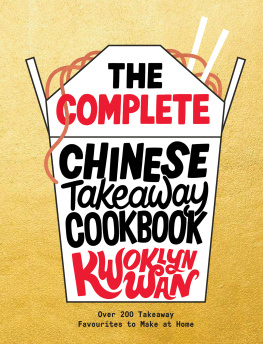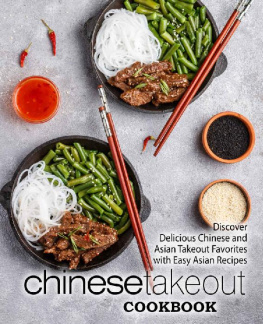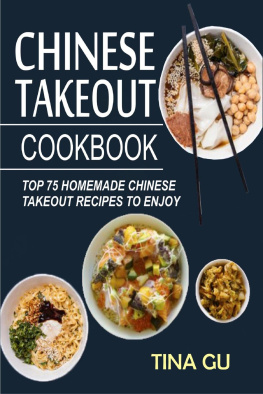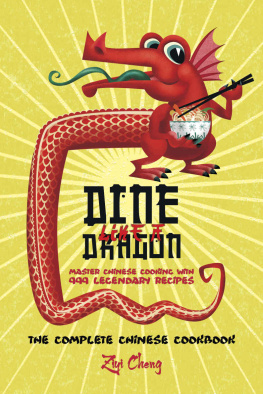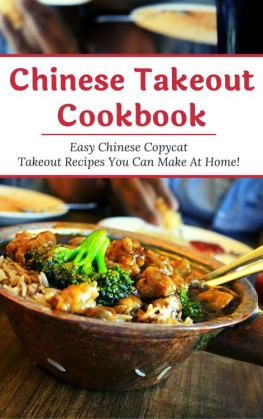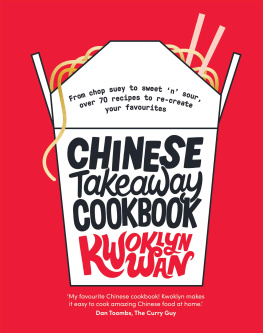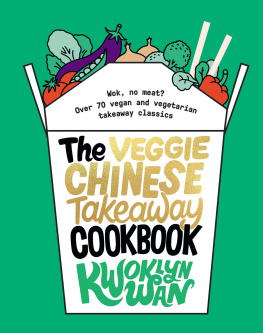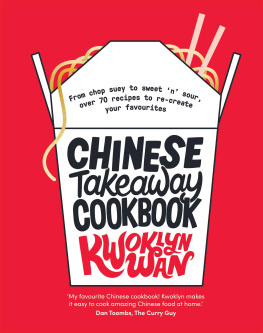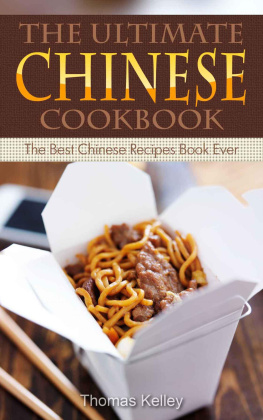
Publishing Director Sarah Lavelle
Editor Vicky Orchard
Assistant Editor Sofie Shearman
Series Designer Emily Lapworth
Designer Alicia House
Photographer Sam Folan; except pictures by Gizem Kumbaraci
Food Stylist Katie Marshall
Props Stylist Agathe Gits
Cover Typography Adam Hayes
Head of Production Stephen Lang
Production Controller Nikolaus Ginelli
Published in 2022 by Quadrille
an imprint of Hardie Grant Publishing
Quadrille
5254 Southwark Street
London SE1 1UN
quadrille.com
All rights reserved. No part of this publication may be reproduced, stored in a retrieval system or transmitted in any form by any means, electronic, mechanical, photocopying, recording or otherwise, without the prior written permission of the publishers and copyright holders. The moral rights of the author have been asserted.
Cataloguing in Publication Data: a catalogue record for this book is available from the British Library.
Text Kwoklyn Wan 2022
Photography Quadrille 2022
Design Quadrille 2022
Cover Typography Adam Hayes 2022
eISBN 9781787137387
I really cant quite believe that Im actually writing the introduction to my FIFTH book. Its seriously mind-blowing, not to mention humbling to think that thanks to some higher force, it was little old me (well, not so little) who was chosen to not only share my fathers and grandfathers legacy, but that of an entire nation.
I could never have predicted as a 5-year-old running up and down the stairs in my grandfathers restaurant that one day Id be sharing so many of his recipes with so many people around the world.
If Im brutally honest there were times I hated working in the restaurant. I mean, how many 14, 15 or even 16-year-old kids want to work on a Saturday night when their mates are out gadding around town? But this was my life, my reality, and look at me now (all smiles). So, what once drove me crazy I now thank, and with an open and loving heart I can honestly say I would not change a thing.
My Complete Chinese Takeaway Cookbook is a collection of favourites from Crispy Duck to Sweet Barbecue Ribs you know the ones that literally fall off the bone to sticky and gooey hot bananas in batter. When you think of comfort food and the dishes you ate growing up as a Friday or Saturday night treat, this book is the key to creating those dishes in your own kitchen.
For many, cooking these recipes will spark memories of simpler times; flashbacks will flood their minds of family evenings sat around the coffee table watching Dusty Bin on the TV and then, in walk Mum and Dad with the TAKEAWAY. Instantly the whole room would fill with the smells of crispy noodles, sweet sauces and Chinese chips. Oh my goodness, the smell of those chips would drive anyone crazy with hunger. The sounds of the rustle of the bag, the tearing of the chip paper and the unfolding of the aluminium containers revealing their hidden treasures: sweet and sour, curry, noodles, fried rice, satay chicken skewers, sweet BBQ ribs
Now Ive made you all hungry, the next step is simple, and I mean REALLY simple. Just flick through the pages of my super-duper book and as soon as you land on a recipe that you know will instantly transport you back to a 10-year-old you, go and cook it. I promise you that nothing gets the old grey matter pumping like the sights and smells of your childhood unfolding in front of your very eyes.
Happy woking, you lovely, lovely people, you.

The kitchen is the heart of the home.
Chinese people have many customs and traditions, such as you must always respect your elders and the littlest of actions have huge significant meanings. Over the years I have not always got these right and have been told off by Grandma and Dad on many occasions. Even now (at the tender age of 48), Dad will correct me on the smallest of things, so much so its now just expected and often laughed about.
CHINESE ETIQUETTE
After pouring tea, it is essential to never point the spout of the teapot at others because this gesture has the same meaning as using the finger to point, which in Chinese culture is considered rude. Therefore, the spout must be directed to where no one is sitting, usually outward from the table.
It is customary to serve fish at Chinese New Year, as it symbolises surplus and prosperity. This dish is normally served with a pair of long, serving chopsticks.
When presented with a bowl of rice, receive it with both hands, as it marks a sign of respect. Receiving with only one hand signals laziness or disrespect.
Chinese meals are usually served on a lazy Susan to make family-style eating all the easier. When a dish is served, the most senior person gets first dibs and then its rotated around the table. It is polite to only take a small portion to make sure everyone gets some.
Under no circumstances should chopsticks be placed upright in your bowl. This symbolises death.
FOOD FACTS
Be prepared for your Chinese host to place food in your bowl, usually without even asking. The host will often put chicken legs or other choice parts of the meal in the guests bowls. Though Westerners may see this as interfering with ones independence and personal space, it is a sign of hospitality in China.
Chinese attach particular meanings to certain foods based on shapes, colours and legends. Superstition and tradition dictate that certain foods must be eaten for certain festivals or events to invoke a blessing. For example, ingot-shaped dumplings mean wealth at New Year, and round mooncakes represent family reunion at mid-autumn.
Noodles are an essential ingredient and a staple in Chinese cuisine, and one of the native ancient foods, with a history dating back to the Eastern Han Dynasty (206220 BC). In ancient times, noodles were typically made from wheat dough but are now available in a wide variety of types, including rice noodles, ramen noodles, udon noodles, mung bean (glass) noodles and egg noodles, to suit all taste preferences and dietary requirements.
The invention of chopsticks reflects the wisdom of ancient Chinese people. A pair of chopsticks, though they look simple, can nip, pick, rip and stir food. Nowadays, chopsticks are considered to be lucky gifts for marriage and other important ceremonies.
Stir-frying
This is by far the most common method of cooking when using a wok. The wok was designed to sit above an open fire in a clay hole, the base and sides are very thin, so the heat is evenly distributed throughout the entire cooking surface. You must remember that once you begin cooking, youll have to pay full attention to what is going on in the wok as you can easily burn the ingredients if you get distracted. With this in mind, it is important that all of your ingredients are prepared before you begin to cook.
Steaming
A traditional Chinese cooking method considered to be a healthy option as cooking requires very little to no oil. Food is often cooked within a bamboo basket and the moist heat enhances the foods natural flavours and locks in their nutrients.
Deep-frying
Ensuring your oil is super-hot, this technique of cooking not only locks in the foods flavour and nutrients but adds a depth of texture that many other cooking methods cannot achieve. Many believe its an unhealthy option but if cooked correctly the hot oil seals the outside of the ingredients, preventing excess oil being absorbed, and the high heat cooks the food super-fast.
Next page
